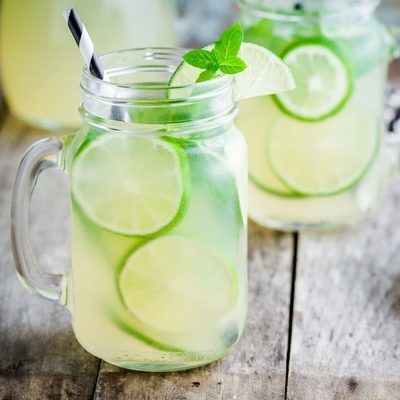
Lime Juice
What is Lime Juice?
Lime juice is the liquid extract of the lime citrus fruit. This juice can be acidic, sweet, or sour. The lime fruit usually has a yellowish-green skin that is smooth and often used to make zest.
- This juice is usually grouped together with lemon juice for classification reasons, as they are both citrus juices.
- Another difficulty in the taxonomic classification of limes is that this is a species that easily produces hybrids.
There are a number of different varieties of lime, including:
- Key lime (Mexican)
- Bearss lime (Persian)
- Kaffir lime (Asian)
- Calamansi lime (Philippines)
- Finger lime (Australia)
- Blood lime
- Rangpur lime (India)
- Limequat
- Omani dried lime (Middle East)
Origin of lime juice
Limes likely originated in northern India and Myanmar, or in Malaysia. Arab traders and crusaders transported the lime around the known world. Europeans and Africans had already started to consume limes by the 13th century. Spanish and Portuguese colonists took the lime to the Americas, while British colonists most likely brought it to Australia. Today, limes are grown throughout the tropics and in other warm regions.
Nutrition
One serving (248g) of lime juice contains:

*Percentages are based on a diet of 2000 calories a day
Limes, like most other citrus fruits, have a high concentration of vitamin C, which keeps the immune system healthy. Other nutrients that limes contain include iron, calcium, vitamin B6, thiamine, and potassium. Its juice also provides antibacterial, antioxidant, and phytochemical properties, which are excellent for good health. In addition, lime juice can help protect the heart, liver, bone, as well as prevent urinary diseases.
Commercial production
The commercial production is similar to the juicing of other citrus fruits. Single-strength juice may be blended with sugar, syrup flavors, water, or even carbonated water before bottling. Sulfite is then added as a preservative. Commercially produced lime juice has a shelf life of more than a year. This juice is also produced in concentration form.
It can be stored for long periods. One method for storing this juice is by freezing it. This can be done by pouring freshly squeezed lime into an ice cube tray for later use.
Lime juice recipes
This juice can be used to prepare various dishes, especially drinks and desserts. It can also be used for marinating different types of meat and vegetables. It is great to use in salads for flavor. Some dishes such as ceviche or poke can be made without any heat, just by adding lime.
Here are a few recipes using lime juice.
- Lime Bars
- Lime Curd
- Lime Chicken
- Lime and Coconut Cake
- Lime Icebox Cookies
- Key Lime Pie
- Lime Pound Cake
FDA regulations
The FDA regulates all fruit juices and citrus juices, including lime juice. It is specified that lime juice must have at least 24.5 percent concentration. In addition, lime juice is also often used as a flavoring or acidifier, which comes under FDA regulations.
References
Citrus aurantiifolia (lime), Invasive Species Compendium, Centre of Agriculture and Biosciences International (CABI)
https://www.cabi.org/isc/datasheet/13438
Narang, Nithithep, and Wannee Jiraungkoorskul. “Anticancer Activity of Key Lime, Citrus aurantifolia.” Pharmacognosy reviews vol. 10,20 (2016): 118-122. doi:10.4103/0973-7847.194043
https://www.ncbi.nlm.nih.gov/pmc/articles/PMC5214556/
